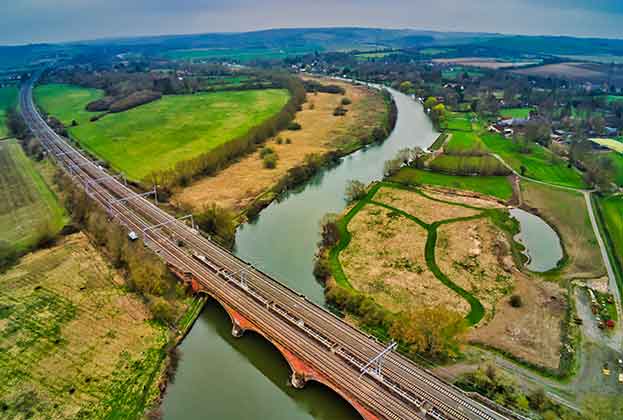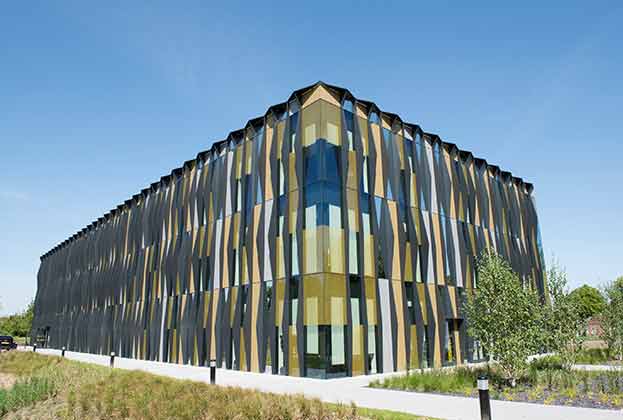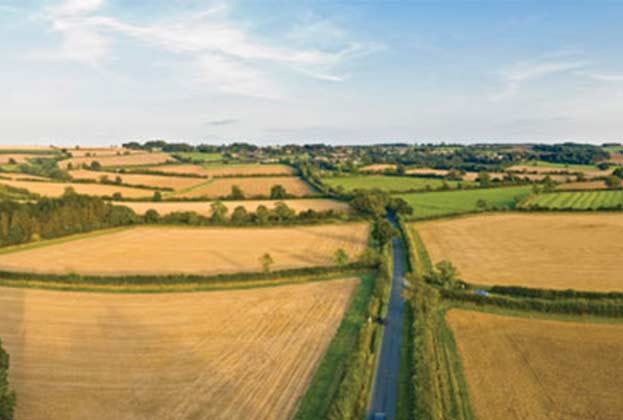Improving the connectivity between these two famous university cities will unlock the potential for growth in the future
The arc between Oxford and Cambridge has long been touted as the area with the greatest growth potential outside London. Bookended by two leading university clusters, and containing a concentration of high-value employment and the UK’s fastest-growing city, it has an agglomeration of assets and activity not found anywhere else in the country.
The original initiative for the area was launched in 2003 by three regional development agencies. The fact that it is yet to really accelerate highlights the challenges in the way of maximising the area’s potential. The area does not function as a single labour market, and commuting between the key urban areas is almost non-existent. There is no train line across the corridor, and the road network is disjointed. East-west direct public transport is limited to a coach service, which takes 1 hour 50 minutes between Oxford and Milton Keynes at peak times, and a further 1 hour 40 minutes to Cambridge.
Improving the area’s connectivity will act as a catalyst for growth
Savills Research
Clearly, improving the corridor’s connectivity and infrastructure could therefore act as a catalyst for future growth. But this won’t be a fast or easy process; the final routes for both the road and rail links are yet to be confirmed, and construction on the Expressway is not projected to start until the mid-2020s. At the same time, the focus should not just be on the end to end journeys the new links will enable. Much of the greatest growth potential lies in the expansion of the travel to work catchments for settlements within the arc, which will link specialised economic hubs, and improve connectivity to London and Birmingham. This will enable greater collaboration and ease pressure in local housing markets.
Why this area?
The arc already has key strengths that make it a suitable location for large scale growth. Productivity in the arc as a whole is 2.6 % higher than the UK average. In addition, it has bucked the national trend for declining productivity growth since 2008, with growth in GVA per head between 2005 and 2015 over 3% higher than the England and Wales average. Milton Keynes is the most productive area, almost 45% higher than the national average outside London.
The productivity of the area is driven by the concentration of knowledge-intensive industries located there. Cambridge generates 19 times more patents in a year than the national average, Northampton has the highest business start-up rate per capita outside London, and across the corridor, there are world-leading hubs for bioscience, engineering and tech.
2.1 million people work in the Oxford-Cambridge arc, and employment growth has averaged 44,000 new jobs per year for the last five years. Oxford Economics forecasts lower growth in the future, however, this projection is likely constrained by the current working-age population. In reality, continuing the current trajectory of job creation would lead to increased migration to the area. While Oxford and Cambridge themselves are currently constrained by green belt, the centre of the corridor offers huge potential for development. The greatest opportunities are likely to be where new infrastructure intersects existing rail and road, creating new hubs.
Bedfordshire sits at the centre of this opportunity, with the new east-west links crossing the Midlands and East Coast Main Line and the M1 in the county. Milton Keynes offers strong growth potential for both residential and commercial development, with proposals to create a new STEM-focused university, densify the city centre and very little constrained land surrounding the city. Satellite new settlements around Oxford and Cambridge, and second-tier settlement growth across the arc will also form a key part of the sustainable growth agenda.
The challenges to delivering on the potential
The National Infrastructure Commission (NIC) found that the main risk to the success of the area is a “lack of sufficient and suitable housing”. While there may not be another UK region that could be a challenge, without a joined-up plan for housing, jobs and infrastructure across the corridor, the area will be left behind by its international competitors. The new east-west transport links provide a clear opportunity to tackle this problem through strategic planning for major development, including new settlements to help meet the area’s future housing need.
Currently, the pattern of growth is not evenly distributed across the corridor. Milton Keynes is the fastest-growing city in the UK, and is projected to continue that growth, with the population increasing from 270,000 in 2018 to 500,000 by 2050. To accommodate this growth, new homes have been built for the last five years at an annual average of 1.3% of existing stock. In contrast, net additional dwellings as a percentage of existing stock has averaged 0.9% in Northampton and 0.4% in Oxford over the same period. Housing development has been hindered by land constraints and competition from alternative uses.
A further challenge to maximising the potential of the new infrastructure is that there is no joined-up planning for the corridor. There is an emerging trend for more strategic planning, such as the Oxfordshire Housing Deal and the Cambridge and Peterborough Combined Authority, but these are mainly at a city region geography, rather than covering the whole growth area, and can be subject to changes in local politics, seen most recently in South Oxfordshire with the recommendation to throw out their current Local Plan.
A key challenge for the area will be combining national planning policy with a regional strategic vision for the whole corridor that joins up infrastructure delivery with economic and housing growth.
Read the articles within The Oxford-Cambridge Innovation Arc below.

.jpg)




.jpg)

